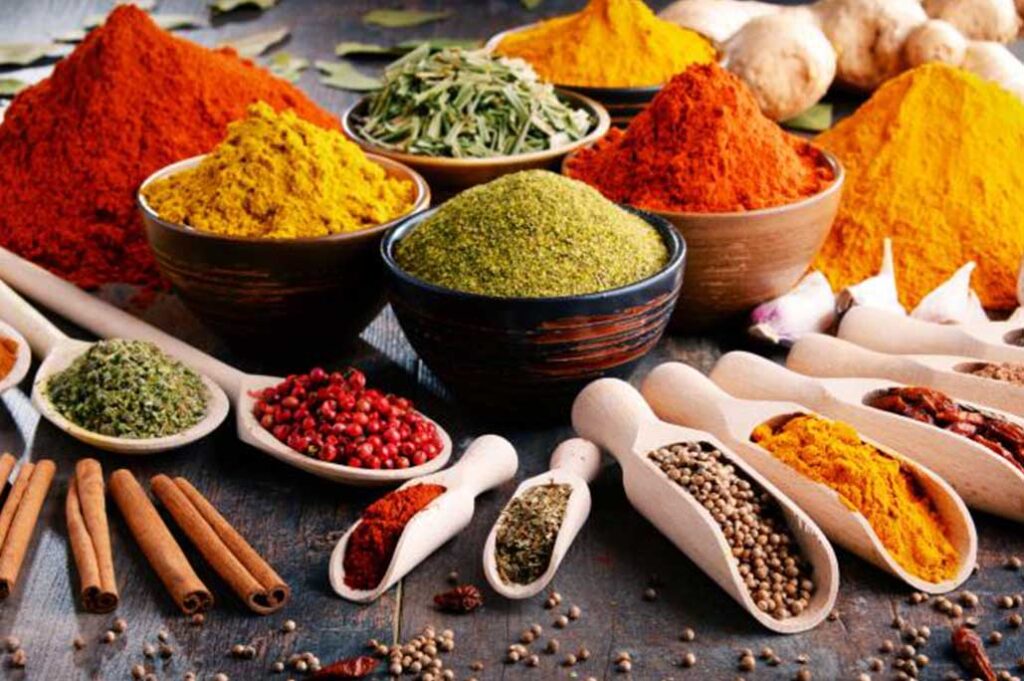Introduction
Despite the fact that flavors have been important to Indian culture and spices for some time, their relevance goes far beyond the subcontinent. India not only produces the world’s most famous spices but is also a huge exporter of such flavors. With an emphasis on the spice trade and notable Indian spice producers, we’ll dive into the fascinating universe of Indian spices in this article.
The Spice Export Landscape
India’s spice export industry has undergone remarkable growth over the years, turning the country into a global spice powerhouse. Let’s explore some key aspects of this thriving industry:
Indian Spice Export: A Global Leader
With a contribution of around 50% to global spice production, India is without a doubt the industry leader. The nation produces a large variety of spices, including, to name a few, coriander, cumin, turmeric, black pepper, and cardamom. Due to its diversity, India has a distinct advantage in the world market for spices.
Masala Export from India
Indian masalas, a concoction of carefully selected spices, are much sought after on a global scale. These aromatic concoctions are a mainstay in Indian cooking and are used to improve the flavor of many foods. India distributes masalas to several nations, satiating the global hankering for a genuine Indian flavor.
Spices Manufacturers in India
India boasts a vibrant community of spice manufacturers, many of which have been in the business for generations. Some renowned names in the industry include Everest Spices, MDH Spices, and Eastern Condiments. These companies follow stringent quality standards and employ traditional techniques to ensure the purity and authenticity of their products.
Export Destinations
The largest export destinations of Indian spices are the United States, the United Arab Emirates, the United Kingdom, and China. Indian spices are used in kitchens around the world. The rich and varied flavors that Indian spices add to a wide range of culinary traditions fuel their demand on a global scale.
Challenges and Opportunities
While India’s spice export industry is thriving, it does face challenges like any other sector. These challenges include fluctuations in spice prices, maintaining quality standards, and adhering to international regulations. However, these challenges are accompanied by numerous opportunities for growth, such as exploring new markets, developing innovative spice blends, and embracing sustainable farming practices.
Sustainability in Spice Production
Sustainability is a growing concern in the spice industry. Consumers are increasingly conscious of the environmental impact of their food choices. Indian spice manufacturers are responding by adopting eco-friendly farming practices and promoting fair trade, ensuring that the spice export industry remains sustainable in the long term.
Conclusion
We understand that the foundation of every remarkable dish lies in the purity and authenticity of its ingredients. That’s why we source our spices from the finest farms, ensuring that each spice is cultivated, harvested, and processed with the utmost care and expertise.
The Indian spice export industry is a tale of flavor, culture, and global outreach. With a rich heritage and a commitment to quality, Indian spices have made their mark on kitchens around the world. The journey from the farms to the spice mills and onto global dining tables is a testament to the enduring popularity of these aromatic treasures. As demand for authentic flavors continues to rise, India’s spice export industry is poised for an even spicier future, where the world can savor the taste of India in every bite.
